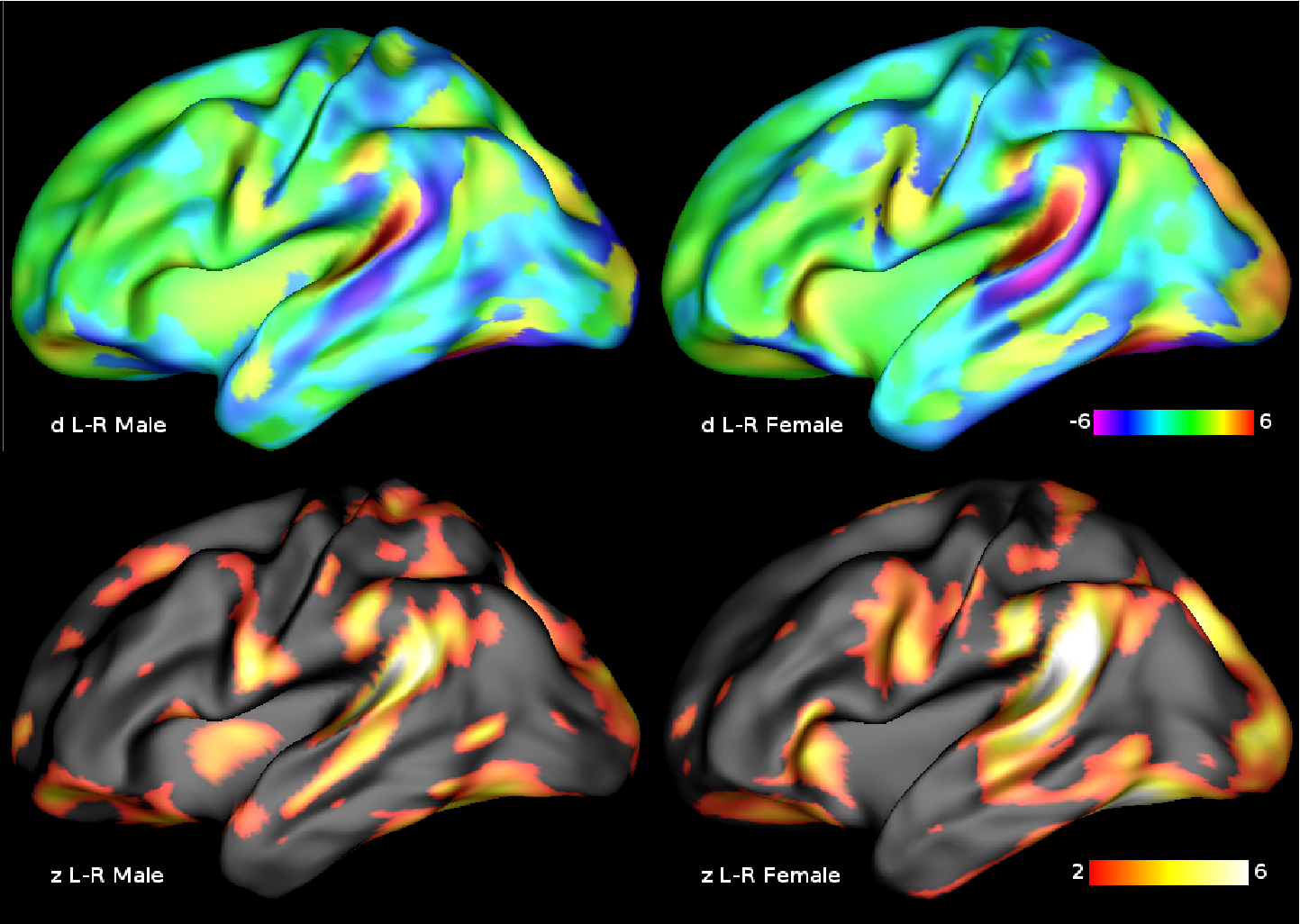Analyzing the Brain's Shape
Kovalev V.A.1, Kruggel F.2
1 Max-Planck-Institute of Cognitive Neuroscience, Leipzig, 2 University of California, Irvine
Brain shape was analyzed in a compact parametric representation obtained by a spherical harmonics transformation. Effects of gender, age and hemispheric side on cerebral shape were studied by in this population sample. The most prominent asymmetries were found in the perisylvian region, the inferior precentral sulcus, the intraparietal sulcus, the lateral orbital gyrus and anterior insula, the fusiform gyrus, the occipital pole, and the anterior cingulate sulcus. Gender-related differences were less apparent, but led to the conclusion that male brains are more asymmetric, and the right hemisphere has a higher similarity across gender compared to the left. Aging has a dominant influence on cerebral shape, and leads to a loss of surface detail. Sulci become broader and flattened. Age-related changes were more pronounced in the left hemisphere, especially in the frontal and parietal lobes, and significantly stronger in males. Both hemispheres become similar in shape with age, and gender-related differences become smaller.
 |
Interhemispheric differences for male (left column) and female brains (right column). Distances (left-to-right, in mm) between corresponding points on both hemispheres and their statistical significance.
Read more...
Kruggel F., Kovalev V. (2002) Classifying Brain Shapes. In: Gedeon T., Wong P., Halgamuge S., Kasabov N., Nauck D., Fukushima K. (eds.), 9thInternational Conference on Neural Information Processing (Singapore), pp. 2678-2682.
Kruggel F. (2008) Robust Parametrization of Brain Surface Meshes. Medical Image Analysis 12, 291-299.
'
